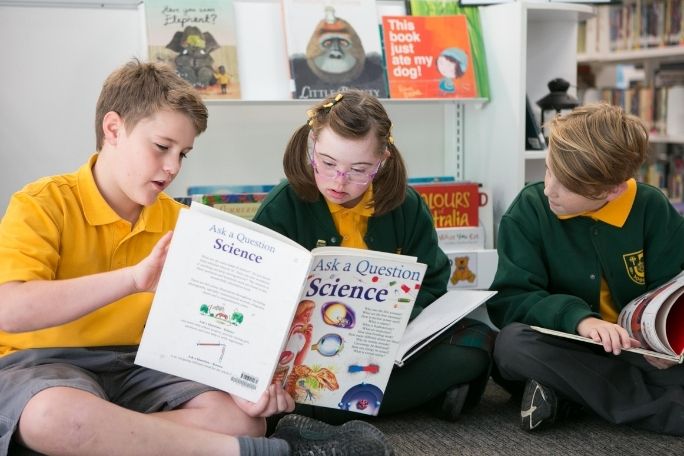Lesson summary
In this lesson, students begin by watching a video which embraces difference in appearance. They then engage in a range of activities to explore how we are different on the ‘inside’ as well as the ‘outside’ by considering their various personality traits. The students then create a lift-the-flap image of themselves to represent their inside and outside characteristics. The lesson concludes with students discussing the importance of everyone being able to self-advocate, exploring an example of a situation in which making assumptions about the needs of an individual had a detrimental impact on their learning.
Learning intentions:
Students understand...
- that they are all different and that they are the only ones who can accurately express what they think and feel
Success criteria:
Students can...
- describe their appearance
- identify their unique combination of traits and characteristics
- explain that all people are different
- describe what it means for someone to advocate for themselves
Lesson guides and printables
Curriculum links
Select your curriculum from the options below.
Lesson details
Curriculum mapping
Australian curriculum content descriptions:
Year 3 and 4 Health and Physical Education:
- Adopt inclusive practices when participating in physical activities (ACPMP048)
- Practise and refine fundamental movement skills in a variety of movement sequences and situations (ACPMP043)
- Explore how success, challenge and failure strengthen identities (ACPPS033)
- Describe how respect, empathy and valuing diversity can positively influence relationships (ACPPS037)
Year 3 English:
- Understand that successful cooperation with others depends on shared use of social conventions, including turn-taking patterns, and forms of address that vary according to the degree of formality in social situations (ACELA1476)
- Listen to and contribute to conversations and discussions to share information and ideas and negotiate in collaborative situations (ACELY1676)
- Use interaction skills, including active listening behaviours and communicate in a clear, coherent manner using a variety of everyday and learned vocabulary and appropriate tone, pace, pitch and volume (ACELY1792)
Year 4 English:
- Understand that social interactions influence the way people engage with ideas and respond to others for example when exploring and clarifying the ideas of others, summarising their own views and reporting them to a larger group (ACELA1488)
Syllabus outcomes: COS2.1, INS2.3, IRS2.11, MOS2.4, GDS2.9, GSS2.8, GYS2.10, EN2-1A, EN2-6B.
General capabilities: Critical and Creative Thinking, Ethical Understanding, Literacy, Personal and Social Capability.
Relevant parts of Year 3 and 4 Health and Physical Education achievement standards: By the end of Year 4 students identify influences that strengthen identities. They investigate how emotional responses vary and understand how to interact positively with others in a variety of situations. Students apply strategies for working cooperatively and apply rules fairly.
Relevant parts of Year 3 English achievement standards: By the end of Year 3 students read texts that contain varied sentence structures, a range of punctuation conventions, and images that provide extra information. They understand how language can be used to express feelings and opinions on topics. They contribute actively to class and group discussions, asking questions, providing useful feedback and making presentations. They demonstrate understanding of grammar and choose vocabulary and punctuation appropriate to the purpose and context of their writing. They re-read and edit their writing, checking their work for appropriate vocabulary, structure and meaning.
Relevant parts of Year 4 English achievement standards: By the end of Year 4 students listen for and share key points in discussions. They make presentations and contribute actively to class and group discussions, varying language according to context. They demonstrate understanding of grammar, select vocabulary from a range of resources and use accurate spelling and punctuation, re-reading and editing their work to improve meaning.
This lesson is part of the wider unit of work Including Everyone
Time required: 90 mins
Level of teacher scaffolding: Medium – some students may find it difficult to think critically and objectively about aspects of their own personality and identity
Resources required
- Plain A4 white paper (2 per student)
- Student stationery
- A device capable of displaying video to the class
- Task example (can display digitally or print)
- Scaffold sheet (optional)
Skills
This lesson is designed to build students’ competencies in the following skills:
- Communication
- Community engagement
- Collaboration
- Critical thinking
- Empathy
- Ethical understanding
- Social skills
Additional info
These lessons have been developed in partnership with Down Syndrome Australia


Welcome back!
Don't have an account yet?
Log in with:
Create your free Cool.org account.
Many of our resources are free, with an option to upgrade to Cool+ for premium content.
Already have an account?
Sign up with:
By signing up you accept Cool.org's Terms and Conditions(Opens in new tab) and Privacy Policy(Opens in new tab).